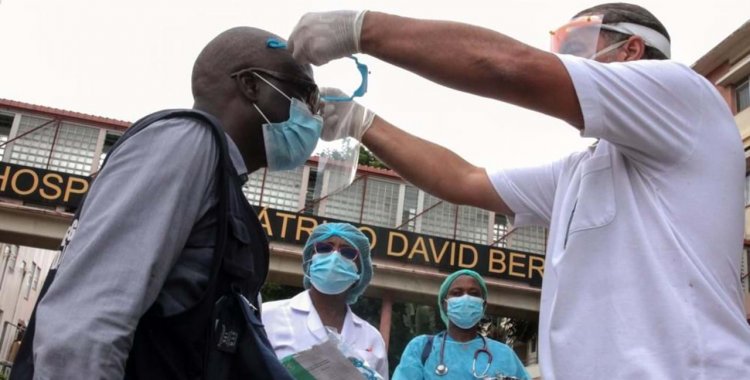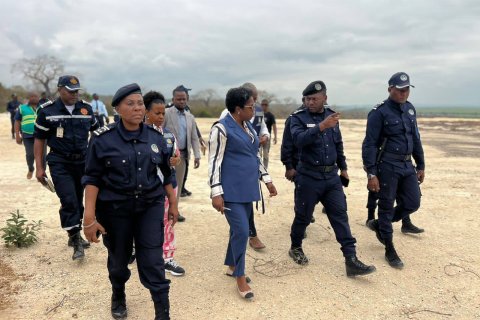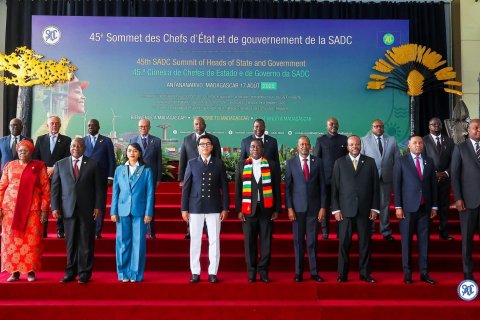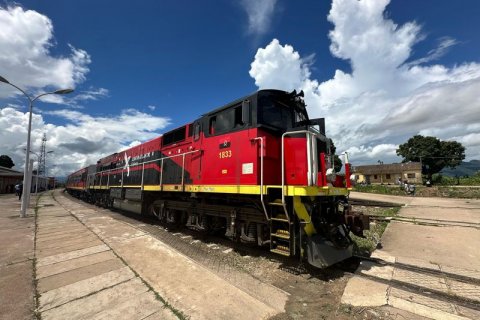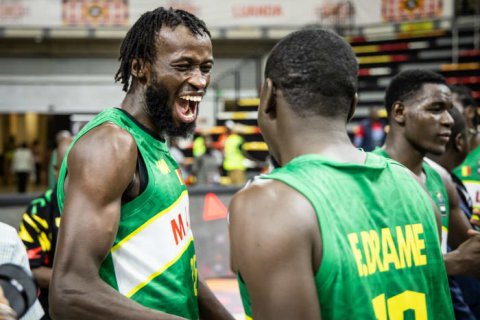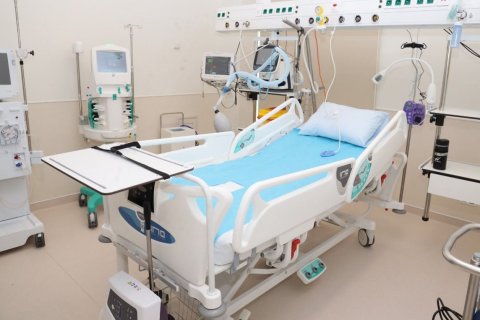With a 3D printer assembled from a 'kit' that cost no more than 141 dollars, Luís Querido, one of the project's mentors, produces in his home, daily, about 50 visors that are being distributed by hospitals and clinics in Luanda
Each visor, or rather, each stand takes about half an hour to produce. The human resources specialist has chosen a model already tested in other countries and uses a process that facilitates the construction of the visor itself: with the holder already ready, just drill an acetate sheet and fit.
It all started with the homemade manufacture of visors to distribute to family and friends. Luís' wife, who works in a clinical unit in Luanda, was the first to be contemplated.
From then on, there were also requests from friends and Luís realised that it was "something that would be missed by those on the front line".
With the stock of raw material he had at home, a bioplastic made from corn derivatives, Luís was producing more equipment and other volunteers joined the cause.
Nowadays, besides those who work with 3D printers, there are those who help with deliveries and logistics, those who support technical and medical consultancy, those who contribute to raising donations of materials and other resources, without even getting to know each other personally.
The mobilization allowed to reach "close to 1000 visors manufactured and distributed since two days before the beginning of the state of emergency", whose first period of 15 days was declared, on 27 March, and meanwhile renewed for the same period until 25 April.
A total of five volunteers have 3D printers and produce between 15 and 50 visor supports per day, which are then distributed in a complete 'kit' of ten visor supports, acetates and a sheet with the sterilization protocol to be submitted for reuse.
Besides the material being biodegradable, the manufacture is also inexpensive, reveals Luís Querido, estimating a cost of less than 500 kwanzas.
The printing process takes between 15 to 60 minutes and was optimised by Luís Querido to produce two media at a time, which allowed "overcoming the obstacle of having few printers available".
Even so, the volunteers have no hands to measure. They have already made deliveries to several hospital units, including the Hospital do Prenda, a reference for treatment of covid-19 in the country, and have distributed material to the teams involved in the search for active cases, INEMA (National Institute of Medical Emergency of Angola) and firefighters.
Luís Querido estimates that only for the health units the requests are around five thousand visors.
Therefore, the ambition of the volunteers is to take the project further: "We have plans to industrialize the manufacture of the visors", which would allow us to go from the current production of 100 to 120 visors per day to 4 or 5 thousand, which would give to protect all health professionals, but also security agents and other people involved in contact with the public.
Gaining scale, Luís Querido admits that Angola could even provide visors to other countries. "Since the situation in Angola seems to be, fortunately, quite under control, it would be great if Angola could support other SADC (Southern African Development Community) countries like South Africa, where the pandemic continues to spread," he suggested.
To meet Angola's needs, it would be necessary to produce at least 50,000 visors, with industrial units already available "to support the cause".
The cost would also drop, to between 150 and 200 kwanzas. In addition, 3D printers could be released to produce parts for other health equipment, an idea already being developed by the group of volunteers (https://viseiras-covid-ao.org/).
If they can "get the industrial production going", the next step will be the creation of bifurcators to allow two patients to ventilate with one fan, said Luís Querido.
The trials for which they have had technical support from the World Health Organization (WHO) "were promising," he told Lusa, stressing that these pieces would allow to double the capacity currently existing in Angola.
The WHO, one of the first entities to receive the visors produced by the group to "test the suitability for use" also noted the potential of the visors "outside the covid-19 context", taking into account other diseases, such as tuberculosis, which still afflict the country.
"We will also be able to protect these health professionals, outside this epidemic, with this type of equipment," noted the volunteer.

